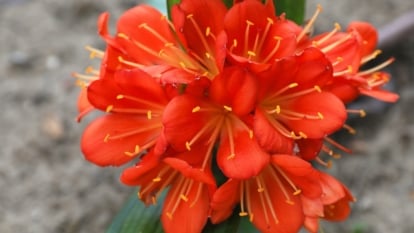Before hybrid tea roses and climbing clematises of every color, there were native plants. Natives thrive with little intervention, and their toughness supersedes most hybrid varieties. Before the days of hybrid breeding programs and cross-pollination experiments, these plants bloomed naturally in all colors, shapes, and sizes.
Each North American area has native plants that thrive within the region’s conditions. Because North America is so vast, we have plants like cacti, giant Douglas fir, and swamp roses on the same continent. This also means plenty of native flowers exist for you to choose from for the backyard.
These naturally growing flowers also provide beneficial nutrients and resources for local ecosystems while impressing us gardeners. Other non-native plants may be pretty, but they often lack the ample rewards natives have for pollinators, birds, and mammals. When you plant these special species in your yard, you invite wildlife back where it belongs.
These 19 plants originate from different ecosystems across the continent. Furthermore, some have multiple species native to different areas of the United States. This means there are plenty of options for your yard, regardless of its conditions. Find one that grows naturally near you, and you’ll have plentiful flowers each year with little time or effort!
Common Currant
Native to the Pacific Northwest and California, this deciduous shrub surprises onlookers every spring when it blooms bright red, pink, and white blooms. These contrast beautifully with green maple-shaped leaves on an attractive arching shrub shape.
Common currant grows quite large over time and needs its own space in the garden. Plant it as a specimen, or create a loose hedge with multiple shrubs.
This native shrub is a beacon for hummingbirds and pollinators, especially as it grows old and tall. Plant transplants from a nursery or grow it from seed in early spring.
Bear Grass
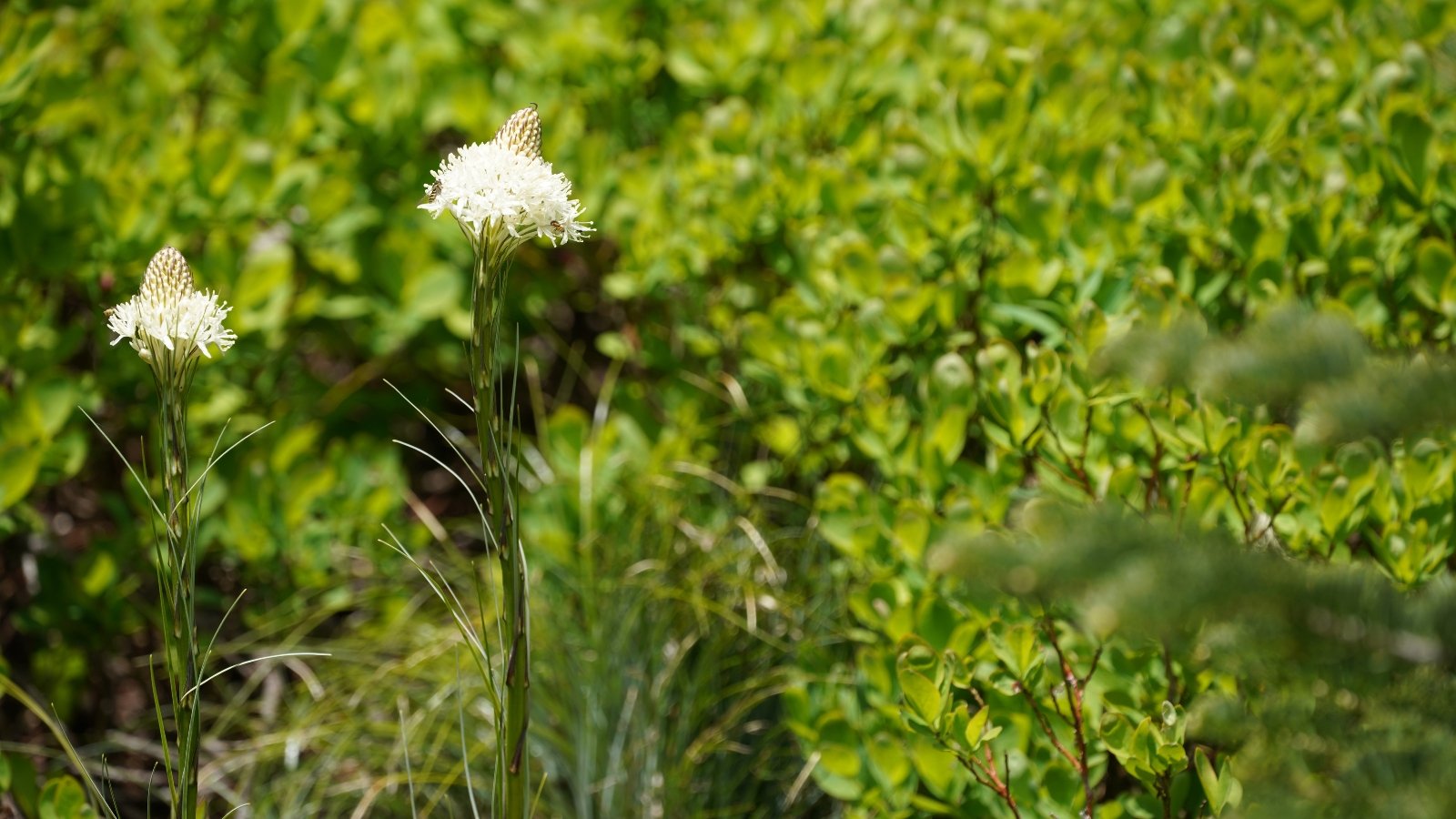
A stunning woodland species, bear grass is a native plant that resembles grasses but is actually a member of the lily family. It sprouts bulbous heads of white flowers on multiple stalks in early summer. These creamy flowers attract native bees and pollinators with nectar and pollen.
This perennial has a wide range in the western U.S., and it appreciates dappled shade. Plants perform well in open forest or meadow-type landscapes where they receive a fair amount of sun, and where the soil is well-draining.
Grow bear grass from collected or purchased seeds or buy plants from reputable native plant nurseries. Seed sprouts in spring after a few weeks of light and moisture.
Columbine
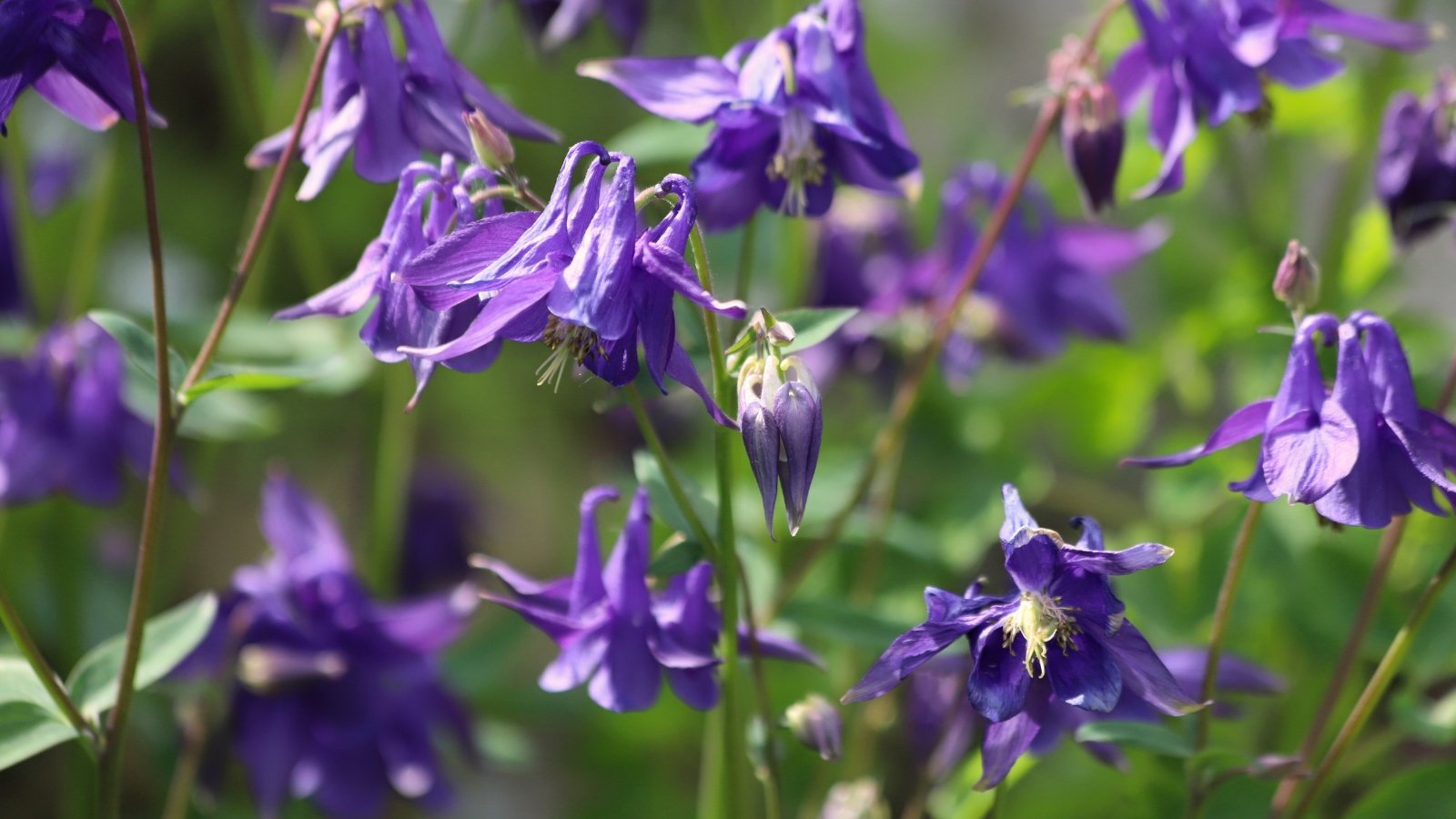
With spurred flowers and dual color combos, columbine delights gardeners each spring. They are low-fuss plants and come in ranges of purple, red, yellow, orange, and white. Lacy, parsley-like foliage grows below the flowers, making the plant a two-part stunner.
This cute perennial’s scientific name is Aquilegia, and there’s a wealth of species native to the U.S. Eastern Gardeners are apt to try Aquilegia canadensis. In the West, try Aquilegia formosa or Aquilegia desertorum.
Columbine species like the ones mentioned above easily grow from seeds from late fall through mid-spring, after a period of vernalization. Plant them in dappled shade with well-drained soil, and your seeds should sprout. Let mature plants keep their seeds, and they’ll spread throughout your garden year after year.
Oakleaf Hydrangea
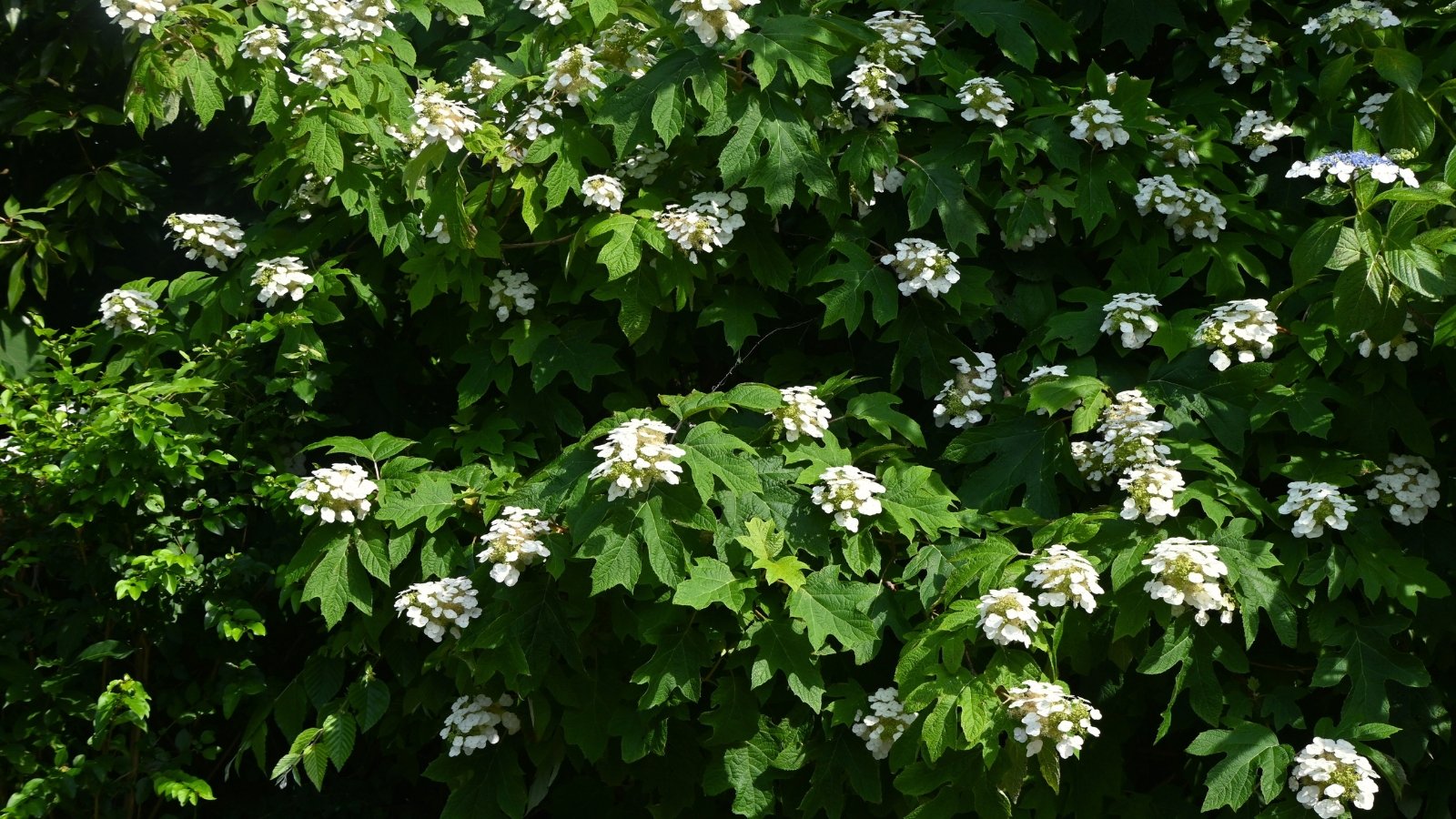
This deciduous shrub’s name refers to the strappy oak-shaped leaves that it grows each year. Atop the divided leaves are large cones of bright white flowers. Unlike the sterile hybrid hydrangeas, this southeastern U.S. native offers pollen and nectar that birds and pollinators love.
Multiple cultivars with unique flowers are now available for home gardeners. For a dwarf plant, try ‘Pee Wee’ or ‘Sike’s Dwarf.’ For even larger flower clusters, try ‘Snow Queen’ or ‘Vaughn’s Lillie.’
Plant oakleaf hydrangea species seeds in 16-cell seed starting trays. They germinate in two weeks. Transplant germinated seedlings to larger pots when they have a few leaves. Mature plants appreciate shade and fertile soil.
Oregon Grape
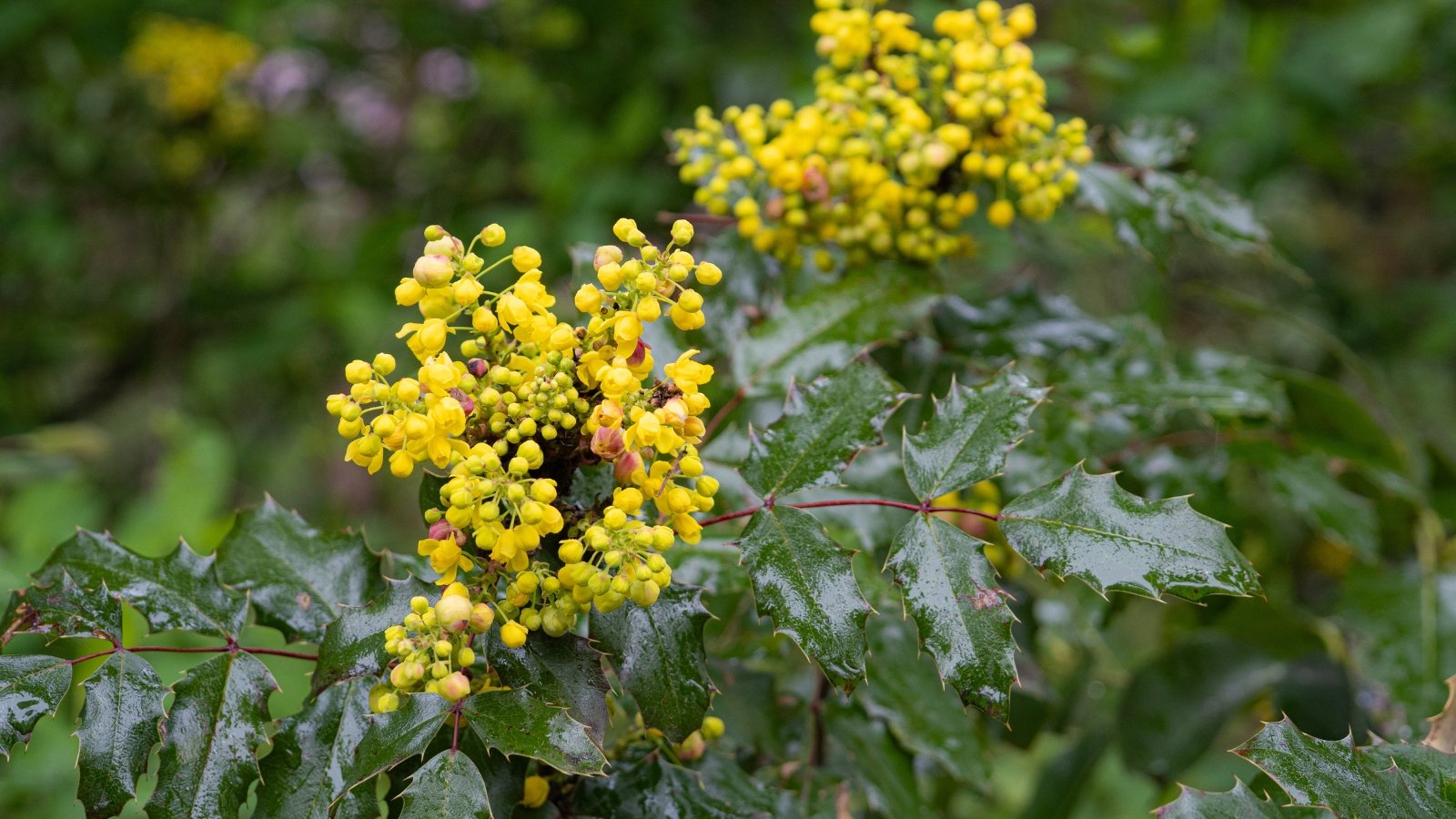
As the name suggests, this native shrub hails from Oregon and Pacific Northwest states. In spring, it blooms earlier than most other shrubs, and it helps pollinators wake up from their winter slumber. Oregon grape’s yellow blooms shine in shady landscapes.
The tall shrub form of this plant goes by the scientific name Berberis aquifolium. For a ground cover, try Berberis repens, “creeping mahonia.” Another beauty Berberis nervosa “longleaf mahonia” shines in dry shade. Select any of these for that tough, shady spot in your garden.
Plant seeds in fall so they experience at least 90 days of cold stratification. In spring, baby seedlings emerge! Thin seedlings so that each one has space to grow.
Lewisia
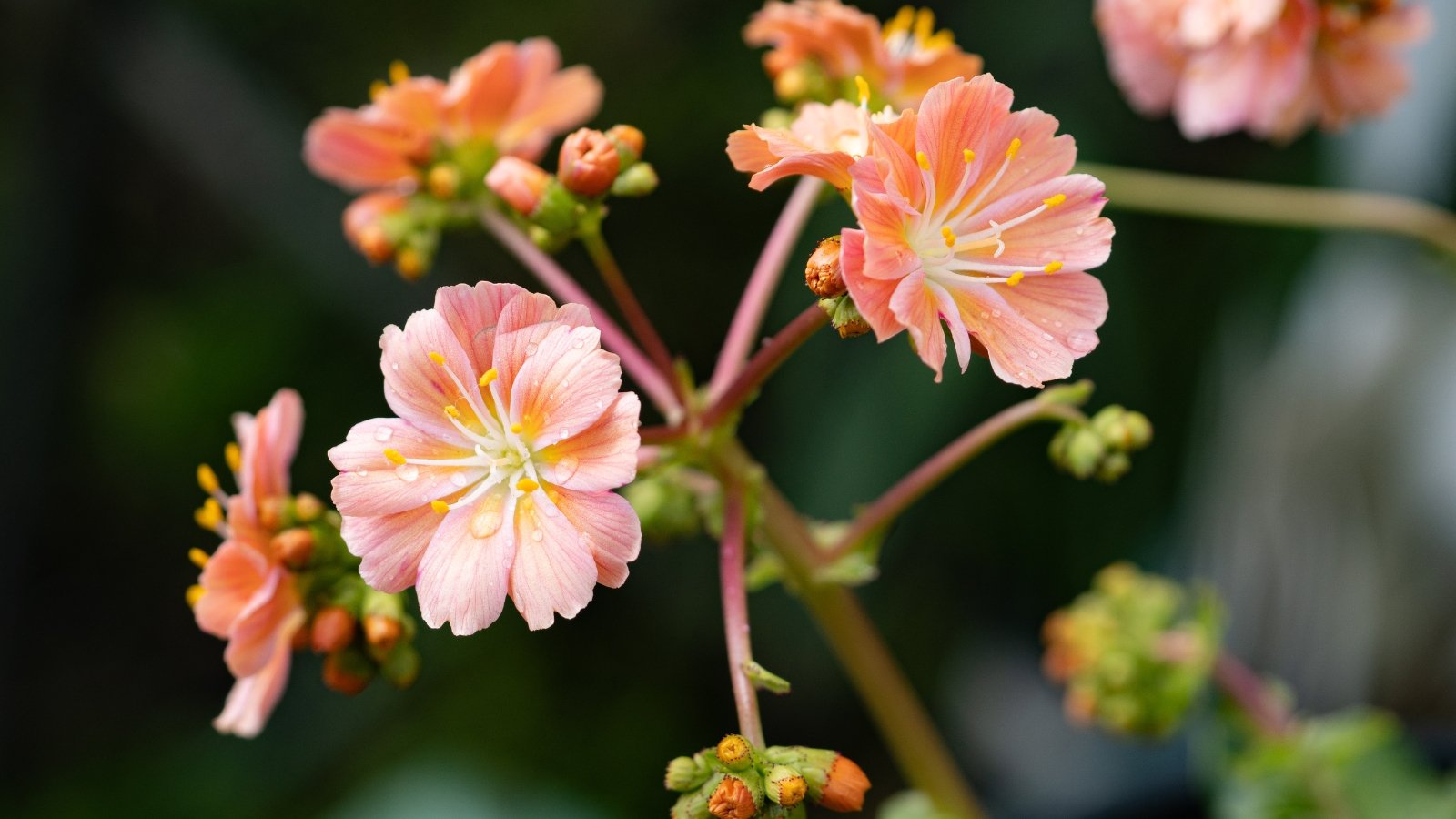
An alpine plant of the West, this succulent perennial grows thick green leaves and clusters of bright pink flowers. Find lewisia growing in rocky mountainous terrain from Washington through to Northern California.
Breeders mix pollen between lewisia species to create the hundreds of varieties that exist today. Lewisia cotyledon is the easiest to grow, and it too has many varieties. Some stellar standouts are ‘Dark Cloud,’ ‘Sunset Strain,’ and ‘Little Plum.’
Growing a specific cultivar requires transplanting a nursery-grown plant, as lewisia seeds sprout new varieties with unique characteristics. Like Oregon grape seeds, lewisia seeds need cold stratification to germinate. Plant them in fall and wait up to a year for germination.
Black-Eyed Susan
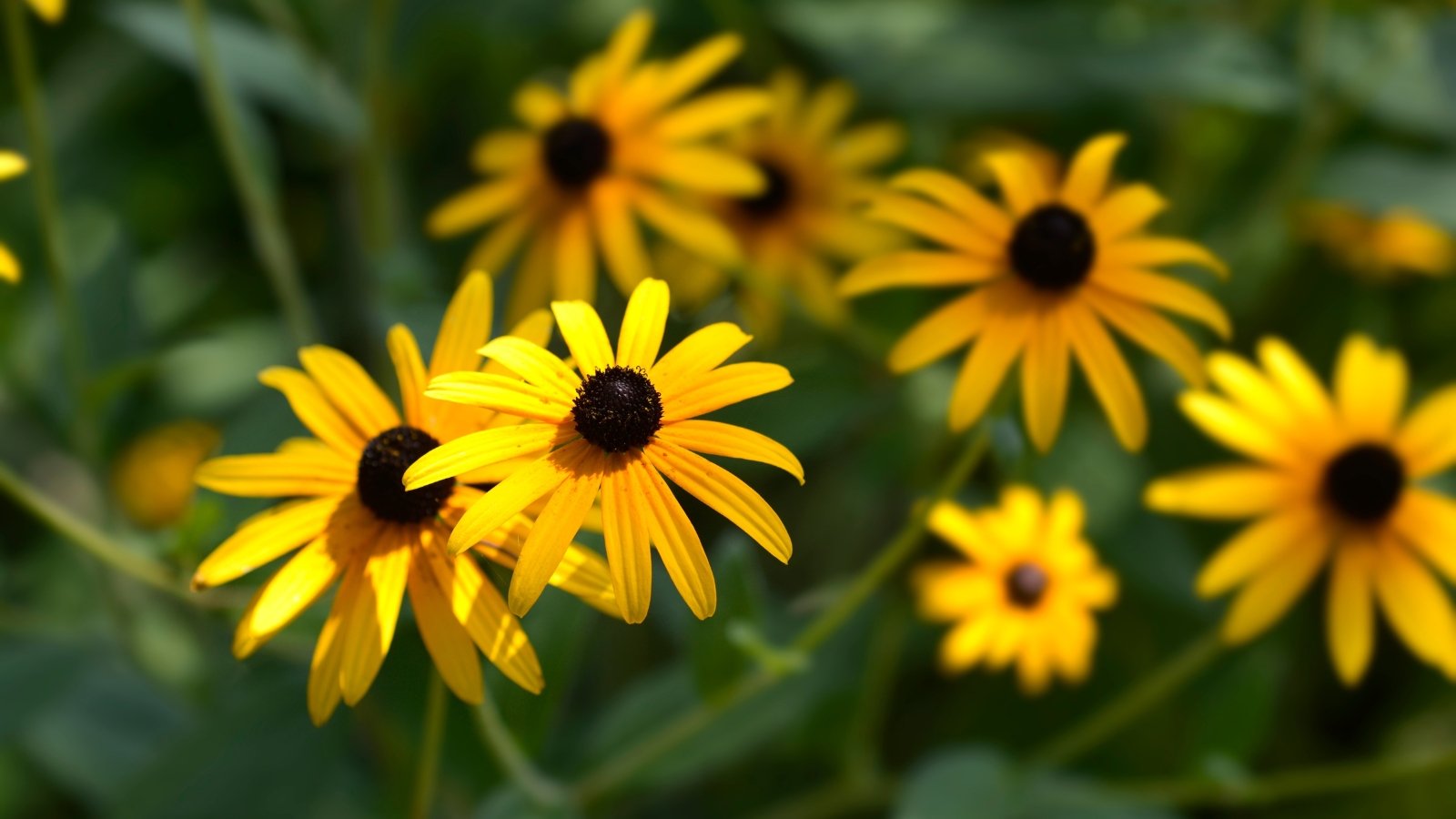
Favored by many a gardener, black-eyed Susans offer proliferous blooms for little in return. Known scientifically as Rudbeckia hirta, it is a gorgeous perennial with small sunflower-like blooms and veined, hairy green leaves. Although native to the eastern U.S., it naturalizes itself from Georgia through to Washington.
The species type black-eyed Susan thrives in cultivation and needs little water. Plant them in Full sun with regular water while they establish themselves. They are perennial except in the coldest zones. Treat them like annuals in U.S.D.A. garden zones four and below.
Plant seeds in fall, or stratify them in your fridge for a month. Then, plant them in spring. These seeds also require cold stratification. Mature plants spread through seed and from their crown and slowly spread over prairie-type landscapes.
Nodding Onion
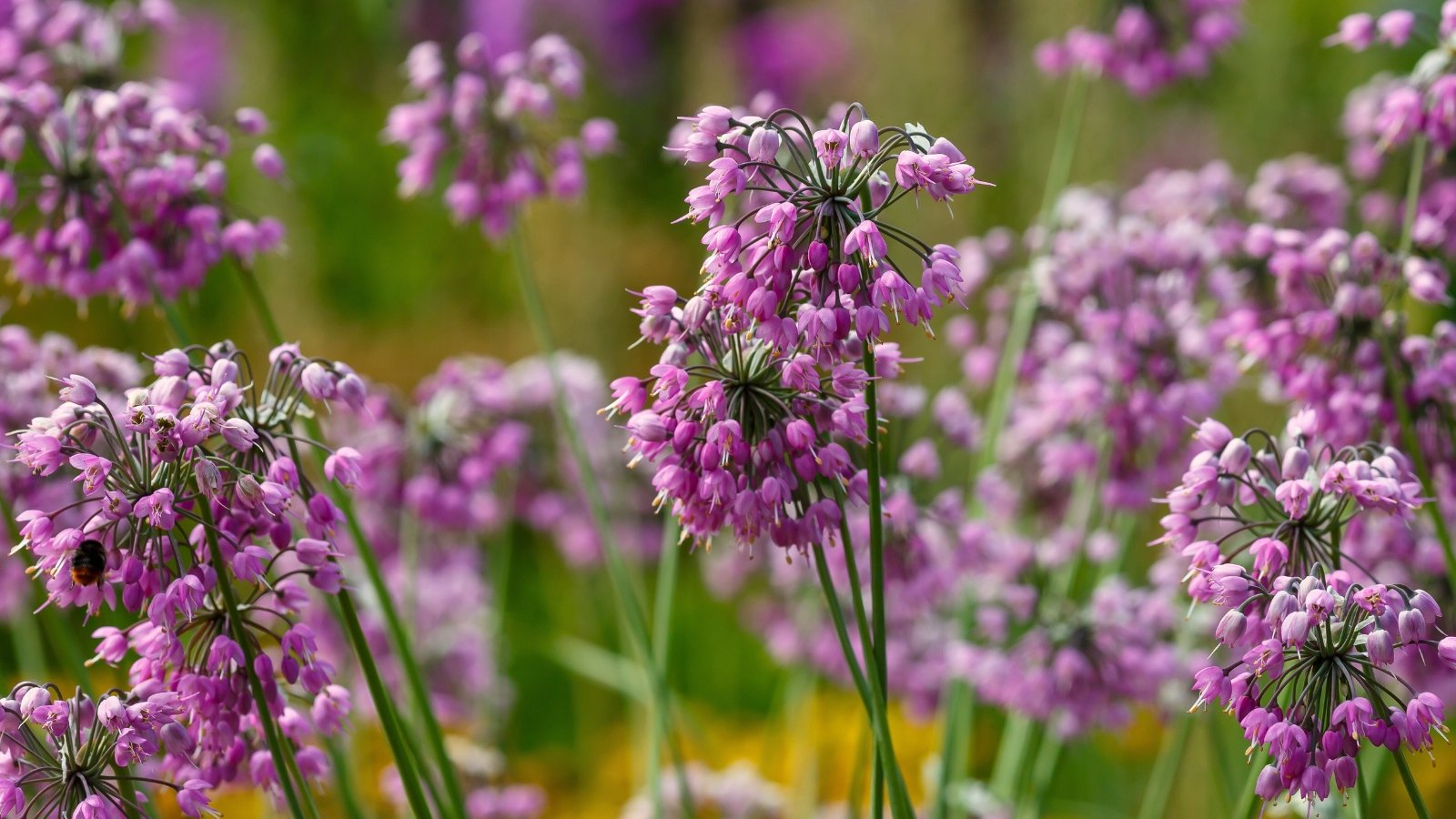
Edible and gorgeous, this flowering native offers many beneficial additions to areas across the country. Thin onion-like leaves grow from bulbs. In spring, these bulbs sprout umbels of whitish-pink flowers that dangle in the wind.
Nodding onion is a species of onion known as Allium cernuum. It appreciates a meadow-type ecosystem with lots of sunlight, good drainage, and regular water during the growing season. Plant them on a border where they’ll shine with other perennials and bulbs.
Plants grow from seeds or bulbs. Plant either in winter before your last frost so they experience cold stratification. In spring, the foliage emerges, and the plants flower after a year or two in the ground.
Ginger
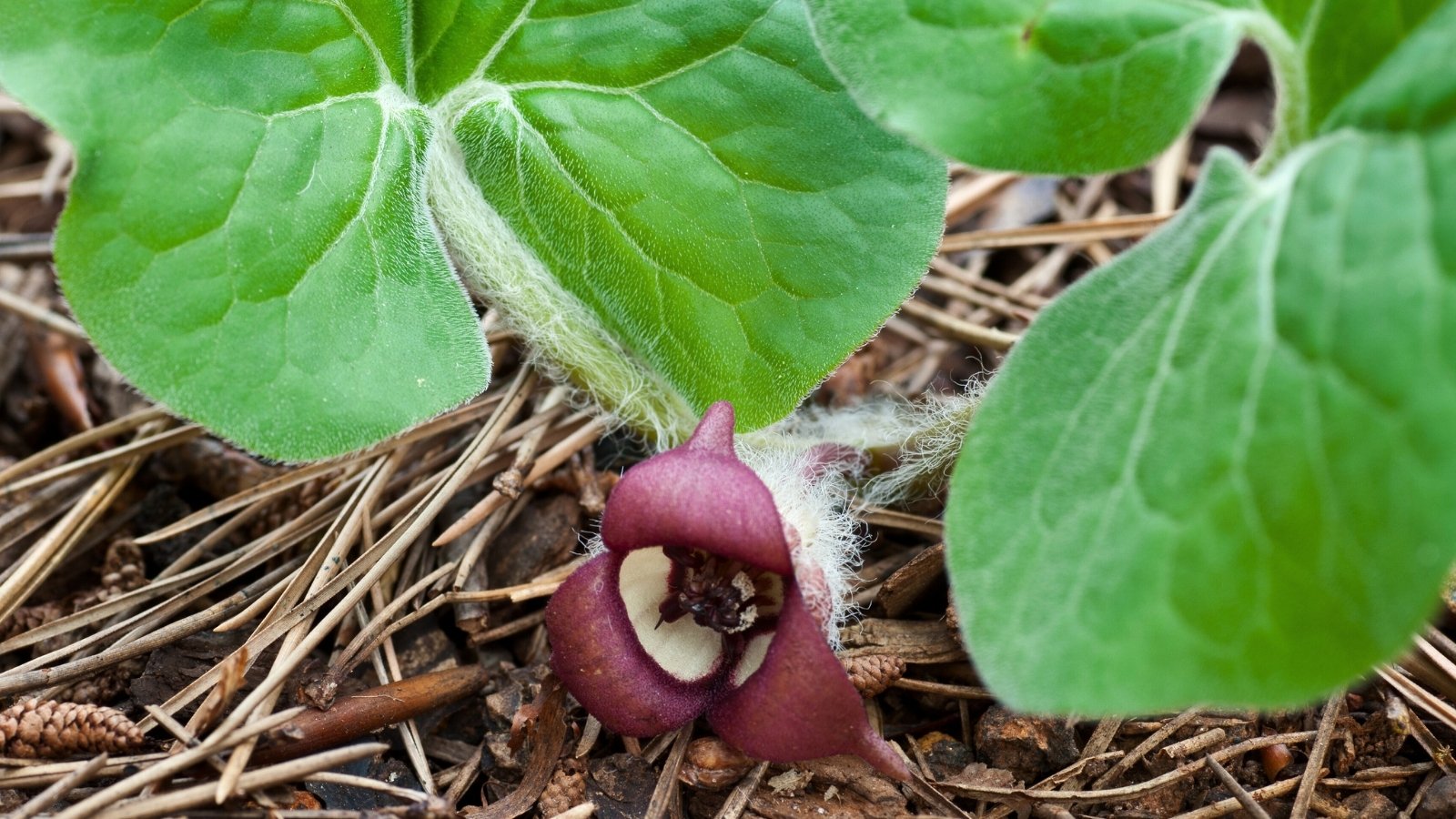
Ginger is a tropical favorite that grows wild across the U.S.! All species grow luscious heart-shaped leaves and subtle flowers. Their roots smell like cooking ginger but are not safe to eat. The brown-patterned flowers make lovely hidden gems in shady areas.
Gardeners on the East Coast have the best luck growing Asarum canadense. In Appalachia and other high-elevation areas, try Asarum shuttleworthii. Pacific Northwest growers like myself love growing Asarum caudatum for its performance in dry shade.
Native ginger seeds are a bit tricky. Sow them in summer and keep them moist. After a winter and spring, they should germinate the next year. Your patience will be rewarded with slow-spreading ginger plants.
Witch Hazel
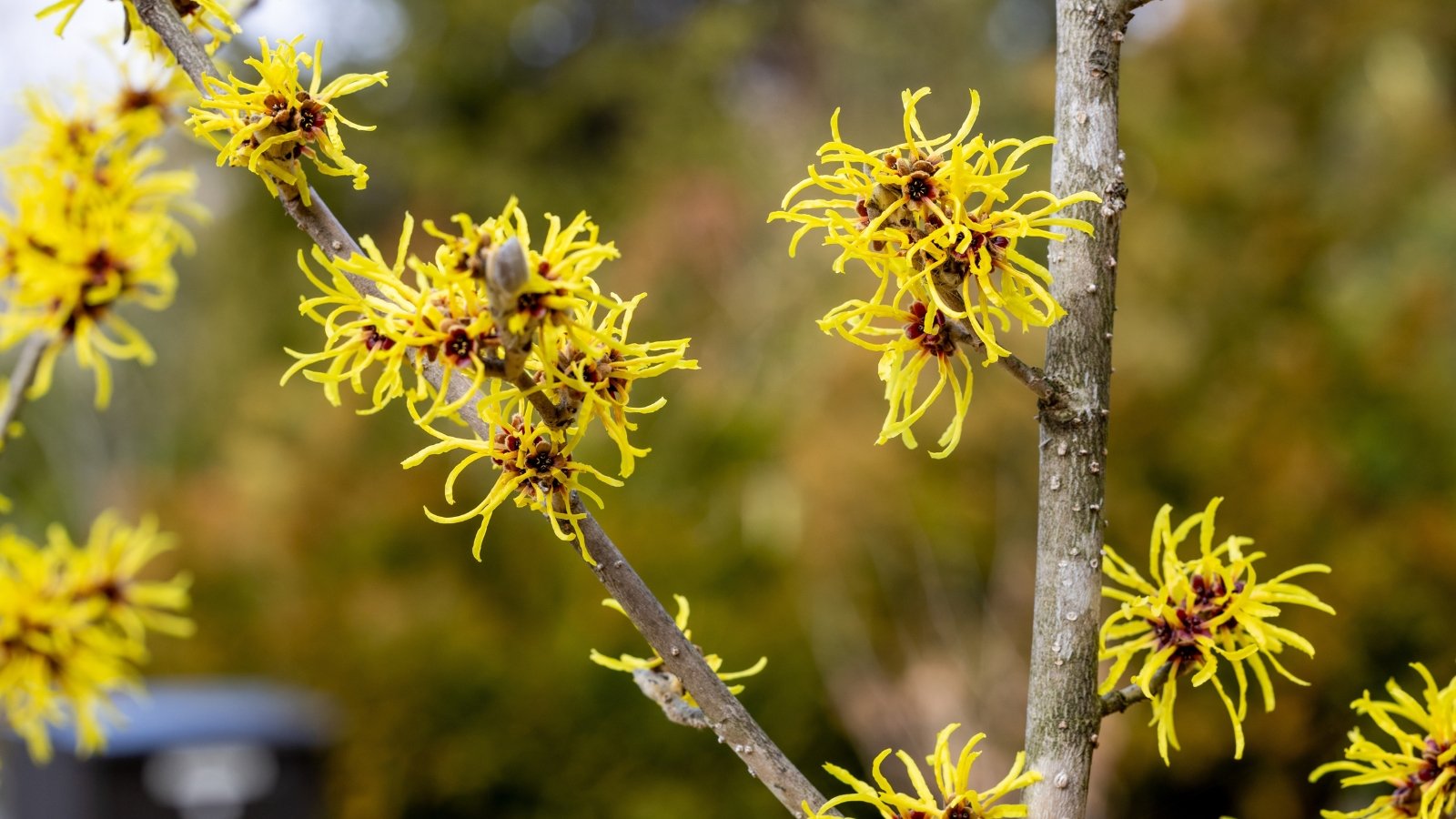
Lush foliage follows spectacular aromatic flowers on witch hazel shrubs. In early spring, they bloom before many other plants, around the same time as hellebores and crocus. In fall, their foliage turns rich shades of orange, red, and yellow.
Two commonly grown species originate from the eastern and southern United States. They are Hamamelis vernalis and Hamamelis virginiana. The latter is the source of witch hazel beauty products, and it grows small yellow blossoms in fall rather than spring.
Grow witch hazel from seeds by scattering them on soil in summer. To germinate successfully, they need five months of warm weather and three months of cold. Keep them well-watered, and by the spring, most of your seeds should sprout.
Iris
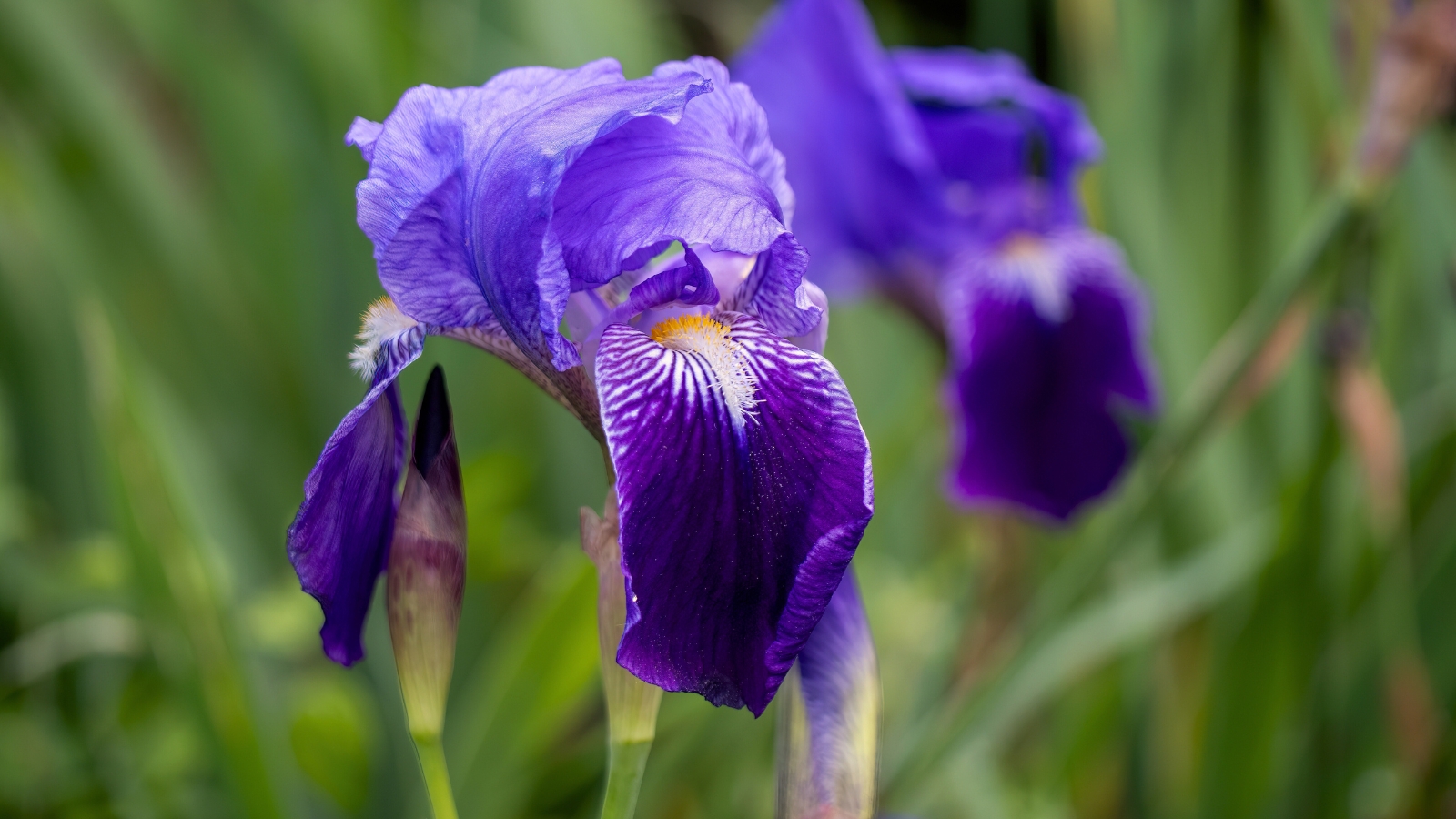
Irises are immensely diverse, and a wide range of species are native to the U.S. and the Americas. All grow long green leaves and intricate flowers of varying shades. Native species offer more beneficial nectar and pollen for local wildlife than non-native ones.
Iris flowers make excellent cut flowers, and they all differ slightly in form and color. Blue flag, western blue flag, and southern blue flag are all native to the regions in their names. Oregon iris and Douglas iris thrive throughout the Pacific Northwest. All have flowers that vary in blues, purples, and whites.
Grow irises from seeds, rhizomes, or bulbs. Plant any of the three in fall and keep the soil moist but not soggy. After a winter period, they’ll sprout enthusiastically in spring.
Indian Plum
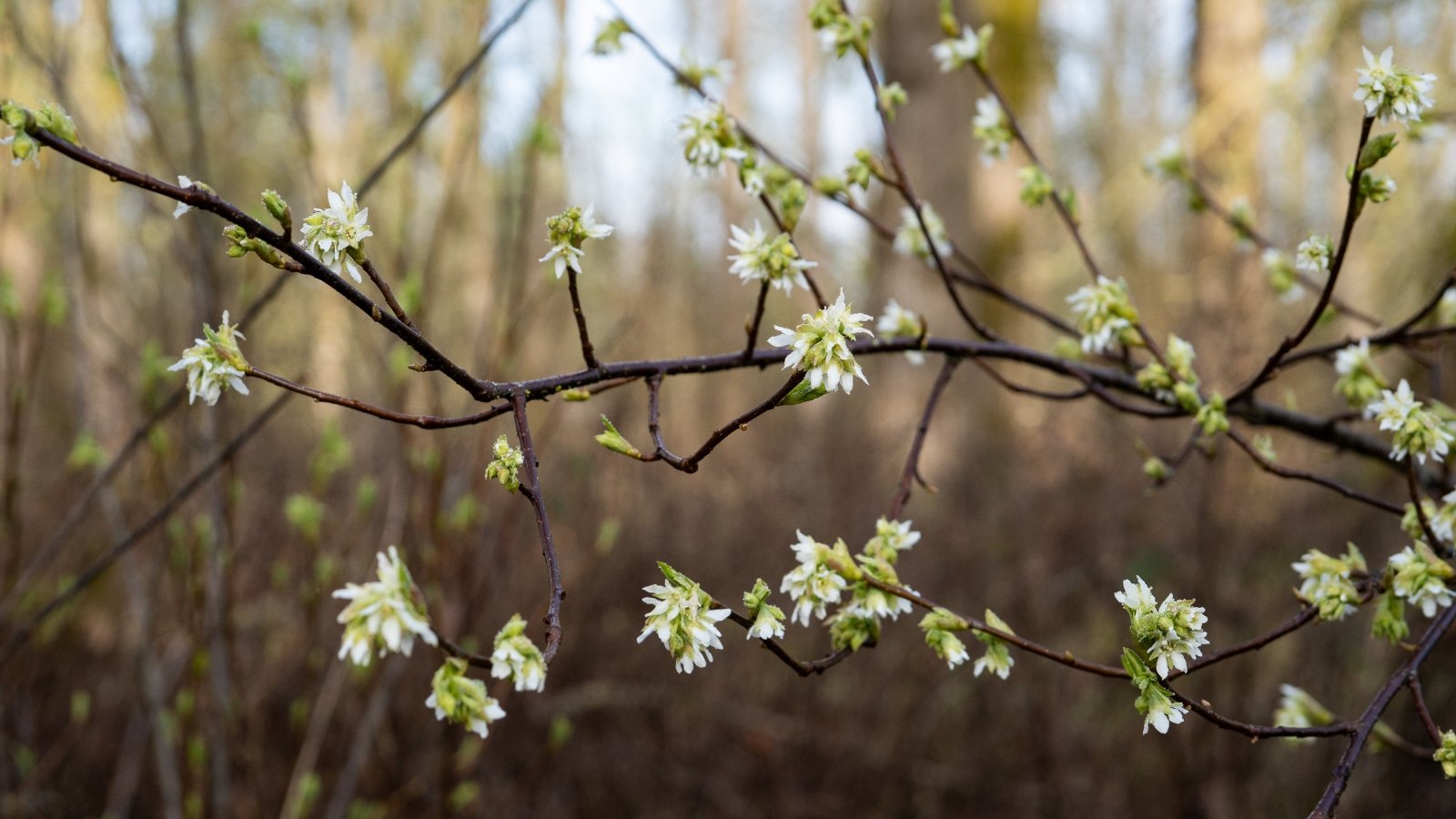
This PNW garden essential is a suckering shrub that grows delicate white blossoms in the early spring. Plant a male and a female plant in the garden and the female will grow fruit each fall. Both the blossoms and the fruit are highly ornamental, and they attract local wildlife.
Indian plum appreciates dappled shade and moist soil, although it is drought tolerant during the summer. In favorable conditions, female plants spread seeds and form colonies of multiple plants.
Plant Indian plum seeds in fall, and after a winter cold-stratification period, they’ll sprout in spring.
Milkweed
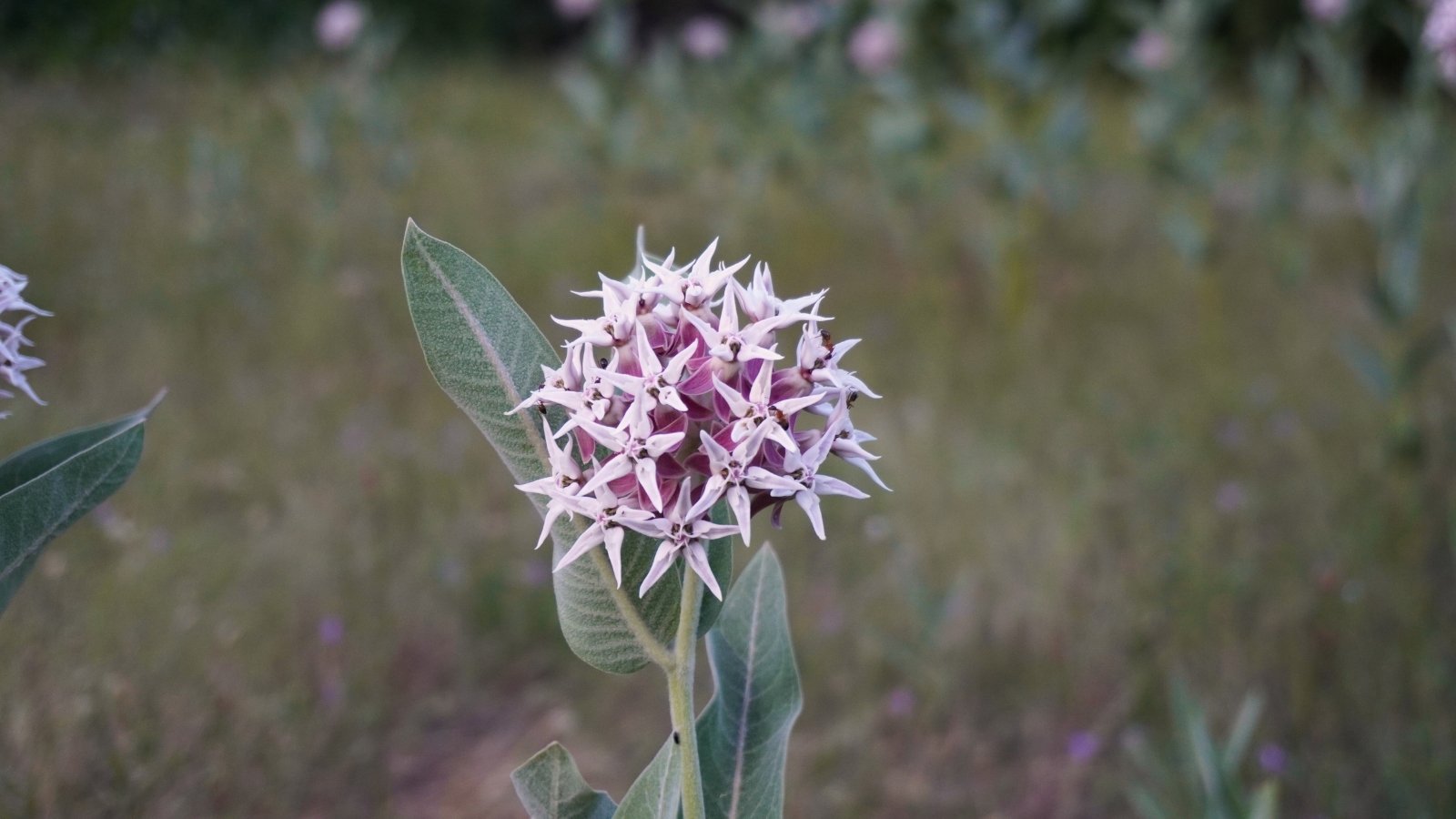
Butterflies’ favorite food, milkweeds are excellent native plants throughout the country. They sprout star-shaped flowers in clusters in colors of pink, orange, and red. Grow milkweed, and both you and the butterflies around you will be happy!
In the western U.S., showy and common milkweeds grow profusely throughout gardens and natural areas. Both flowers have pink blossoms in the summer. In the eastern U.S., try swamp milkweed or butterfly weed.
Be warned, native milkweeds like to spread in conducive conditions! Plant one today, and they’ll reward you each year with showy blooms. Scatter milkweed seeds in the fall, and they’ll germinate in the spring after successful cold-stratification.
Opuntia
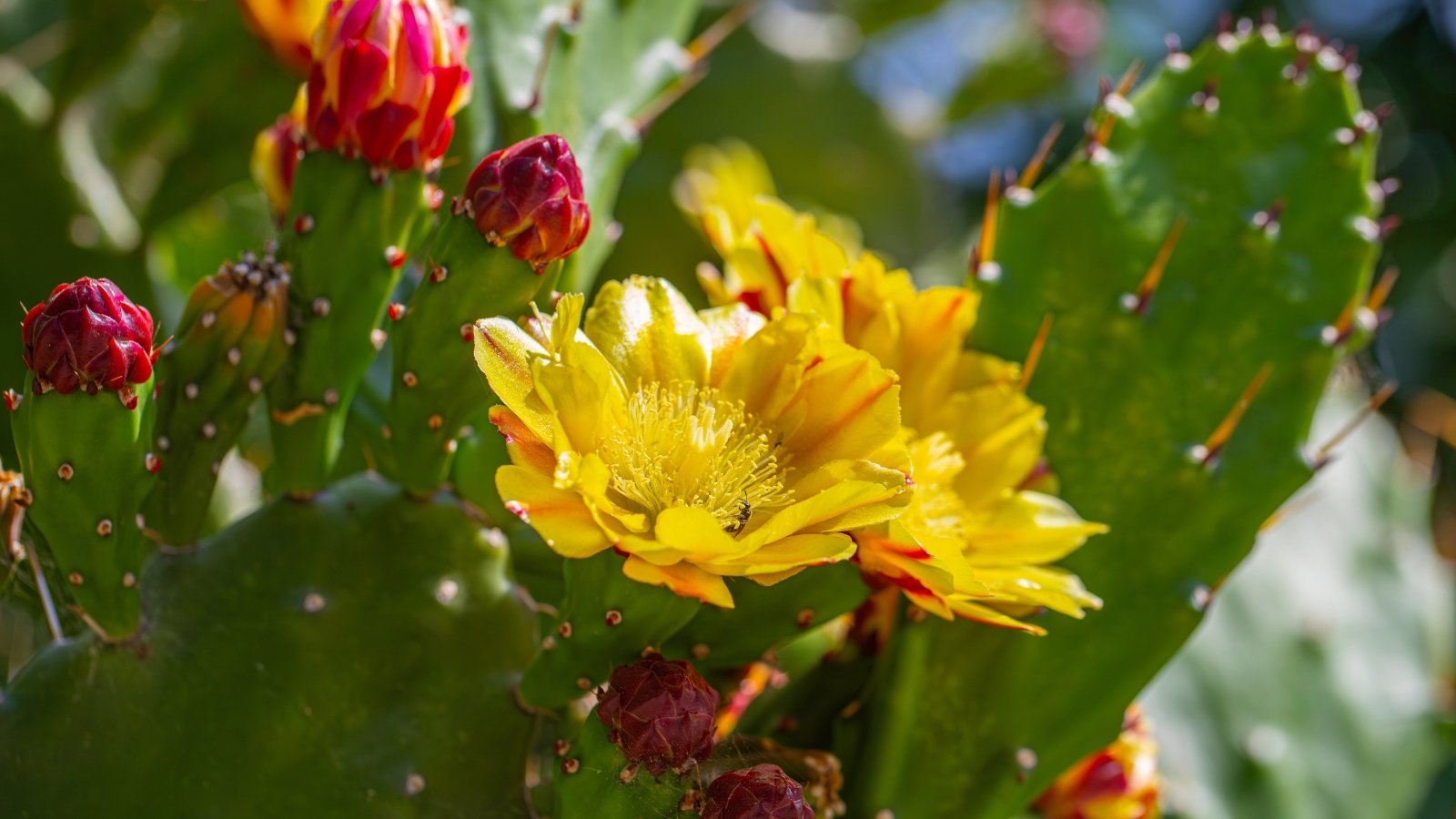
Have you ever seen a cactus flower? They are rare sights but rewarding for viewers with huge, showy blooms. Opuntia cacti are no different. Their blooms are many-petaled and purple, red, orange, yellow, or white.
Native to the southern U.S., opuntias are drought-tolerant desert plants that appreciate well-drained soil, little water, and full sun. The most widespread species is the prickly pear, known scientifically as Opuntia ficus-indica. Both the foliage pads and fruit are edible—just be careful cutting off the spikes!
All opuntia cacti grow from seed or cuttings. Seeds germinate with heat and light. Start them from spring through fall in pots. Keep the soil moist but not soggy, and the seeds should sprout in a week or two.
Beard Tongue
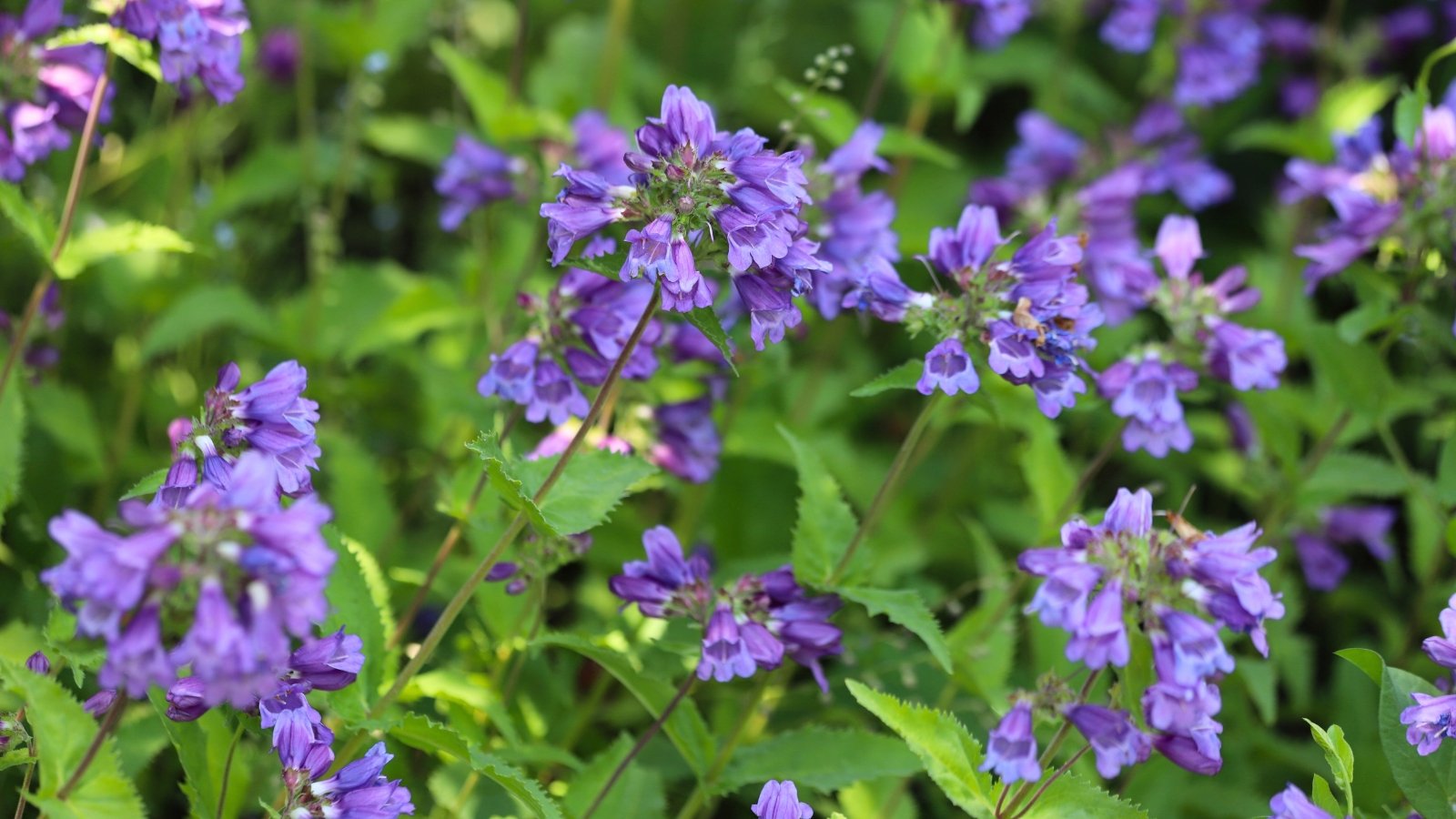
Herbaceous and woody perennials, the native beard tongues thrive in a range of habitats. Their bell-shaped flowers adorn the tops of the stems, and they make a striking display in prairie and meadow gardens. Native beard tongues and cultivated species range in flower color from pink-red to purple to white. Some rare ones are yellow!
Dry areas of the Southwest should try desert beard tongue, a shrubby species with pinkish-purple flowers. Midwest gardeners have shell-leaf penstemon and prairie penstemon to choose from. Penstemon richardsonii grows native to the Pacific Northwest, but it also grows well in other areas.
Grow beard tongues from seed in the spring. Start them indoors in pots or outdoors in a sunny locale. Keep seeds and young plants well irrigated while they sprout and establish themselves. After establishment, they are drought-tolerant.
Monkey Flower
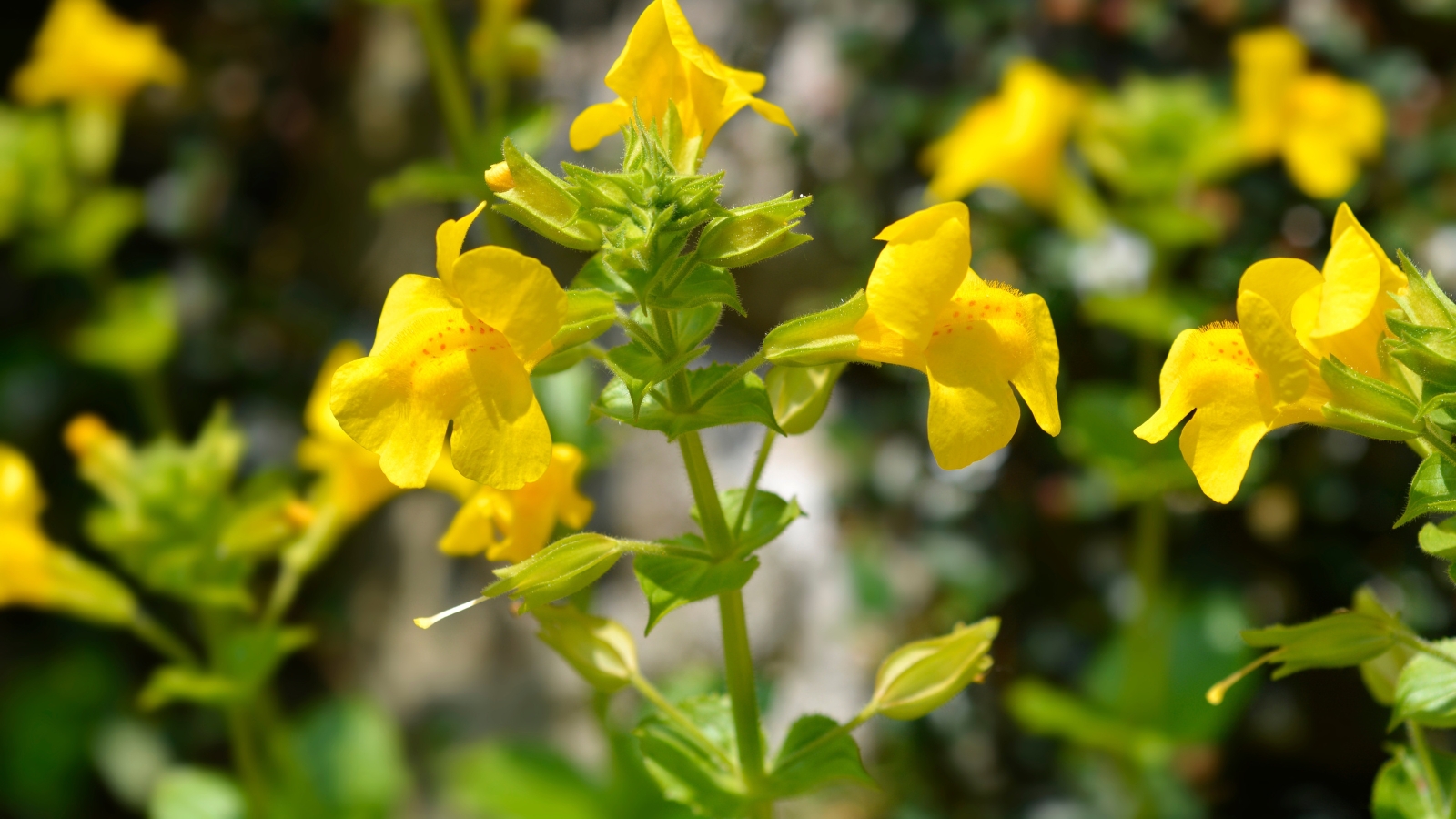
A personal favorite of mine, monkey flower plants sprout thin yellow flowers that glow in the shade. They love wet, sometimes shady areas and appreciate fertile soil. If you plant them in a spot like this, they’ll spread through runners and seed each year to form colonies of yellow and green.
This flower gets its name because it looks like a monkey’s face when it’s open. The scarlet monkey flower adapts to many different conditions, so long as it gets consistent moisture. The yellow monkey flower is somewhat enthusiastic in the garden and covers wet areas with ease.
Grow monkey flowers from seed for incredible genetic variation! Different plants grow flowers of slightly different colors. Sow seeds in the spring in cold zones and during the fall in warmer locations. Seeds sprout in a few days and slowly form little rosettes.
Perennial Hibiscus
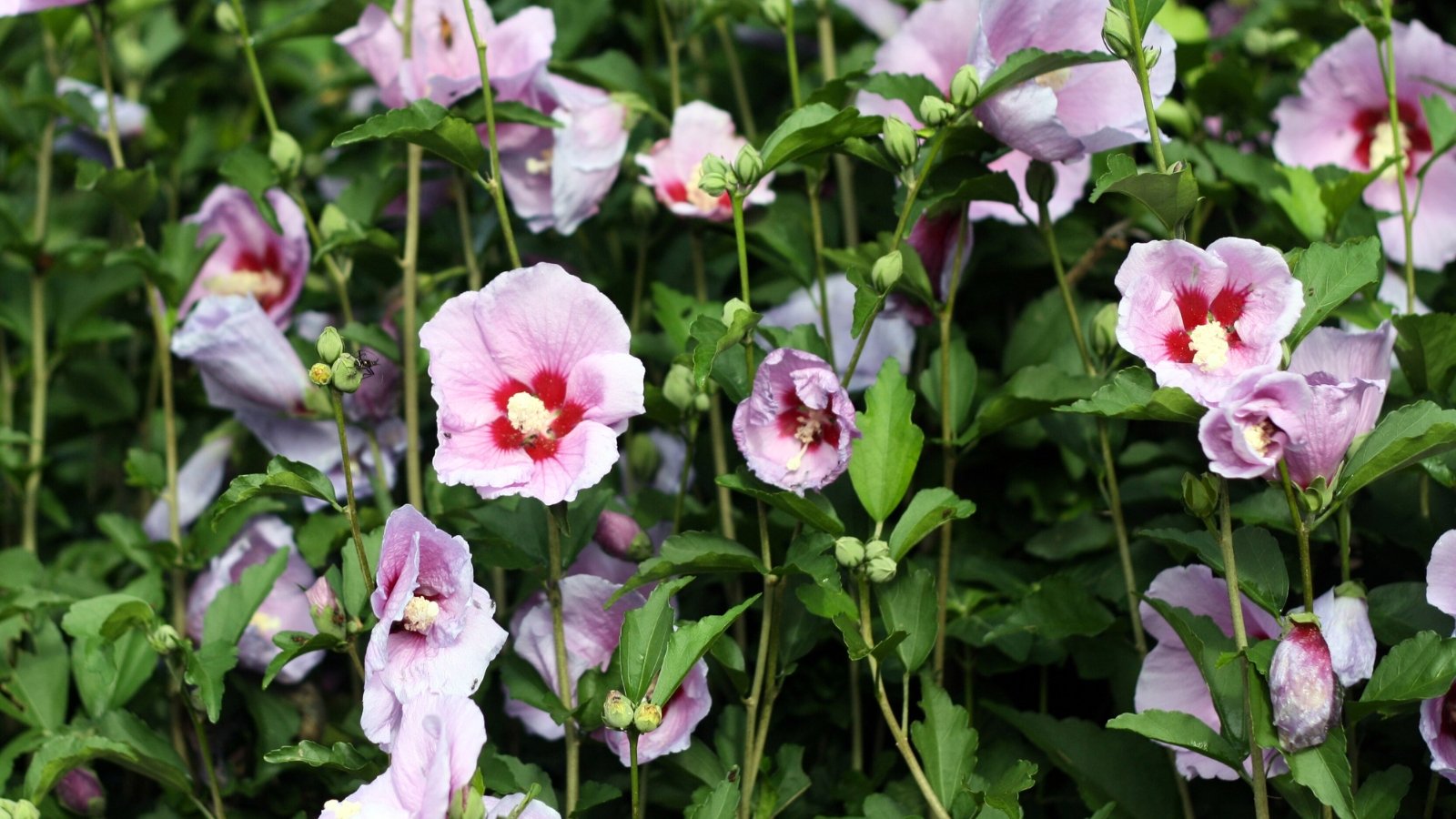
Although most hibiscuses are native to Hawaii, one is native to the eastern U.S.! Swamp mallow, known as Hibiscus moscheutos, is a perennial hibiscus that flourishes with full sun, fertile soil, and regular water. It dies to the ground with frost and emerges each spring to flower.
Blooms on mature plants can reach one foot across! Give this shrub some room as it grows to mature heights of eight feet and as wide as three feet. Various cultivars now exist at nurseries, and flowers vary in colors of red, pink, and white.
Grow this species from seed to find new flower variations. Sow seeds in 5” pots indoors in the winter, and transplant mature seedlings outdoors after the last frost in your area. When treated this way, they should flower their first year.
Azalea
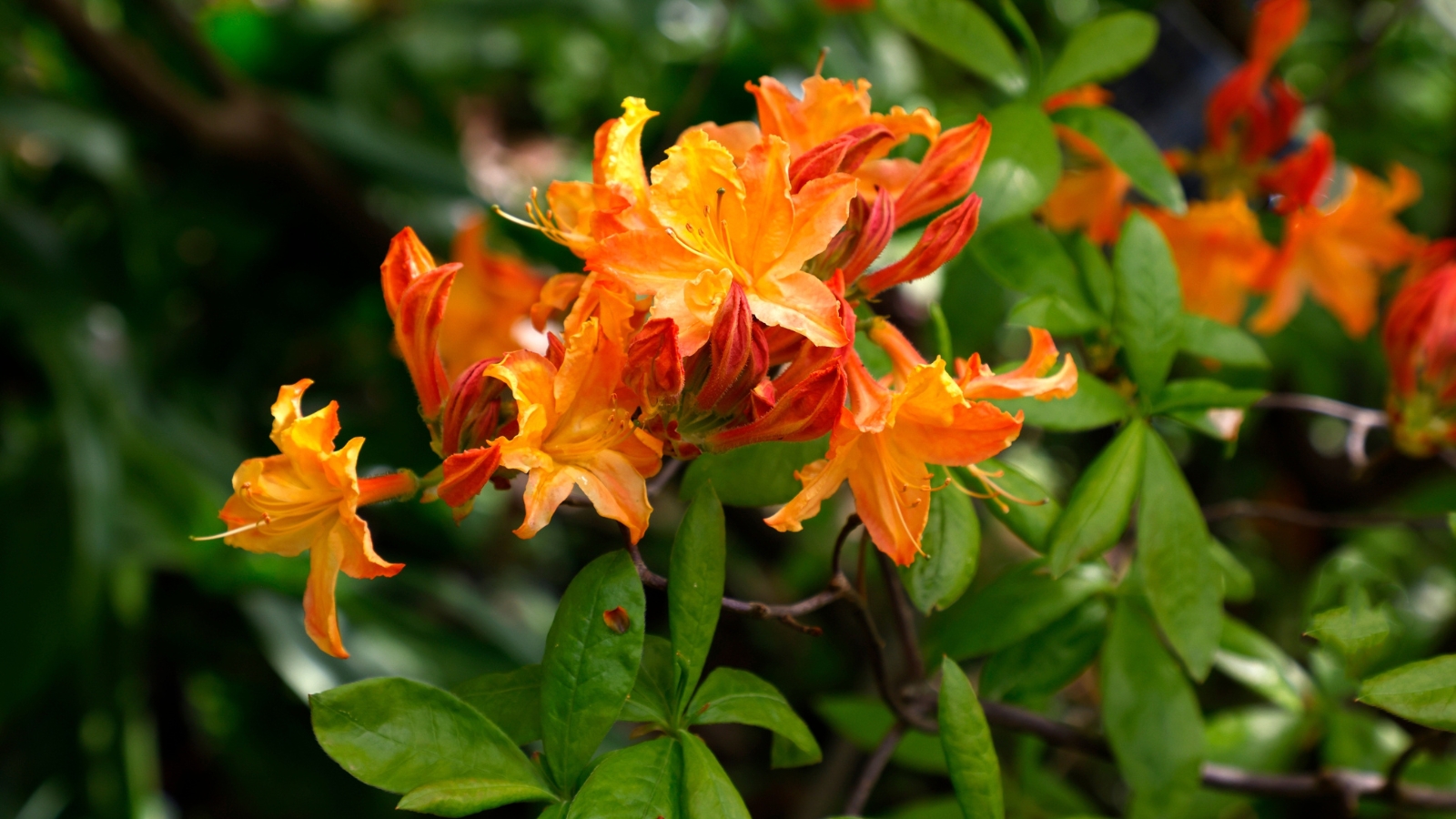
All azaleas fall under the genus Rhododendron, and they mimic the larger rhododendrons. Azalea species grow little clusters of flowers and typically have smaller leaves than rhododendrons. Azalea breeders crossed many different species, and some new ones now look like rhododendrons. Native azalea species are special for their hardiness and the beneficial nectar and pollen they offer the local ecosystem.
In the West, try western azalea. It is cold-hardy to -5°F (-21°C) and thrives in the shade. The flowers range from pink to white and are variable on the same plant. In the East, try pinkshell azalea. Native to North Carolina, this species is cold-hardy to -20°F (-29°C) and naturally grows in mountainous terrain.
Grow azalea from seeds in the early spring in small flats. Give them dappled shade while they sprout, and keep them moist. Transplant them into pots or the garden when they start to crowd each other.
Mountain Laurel
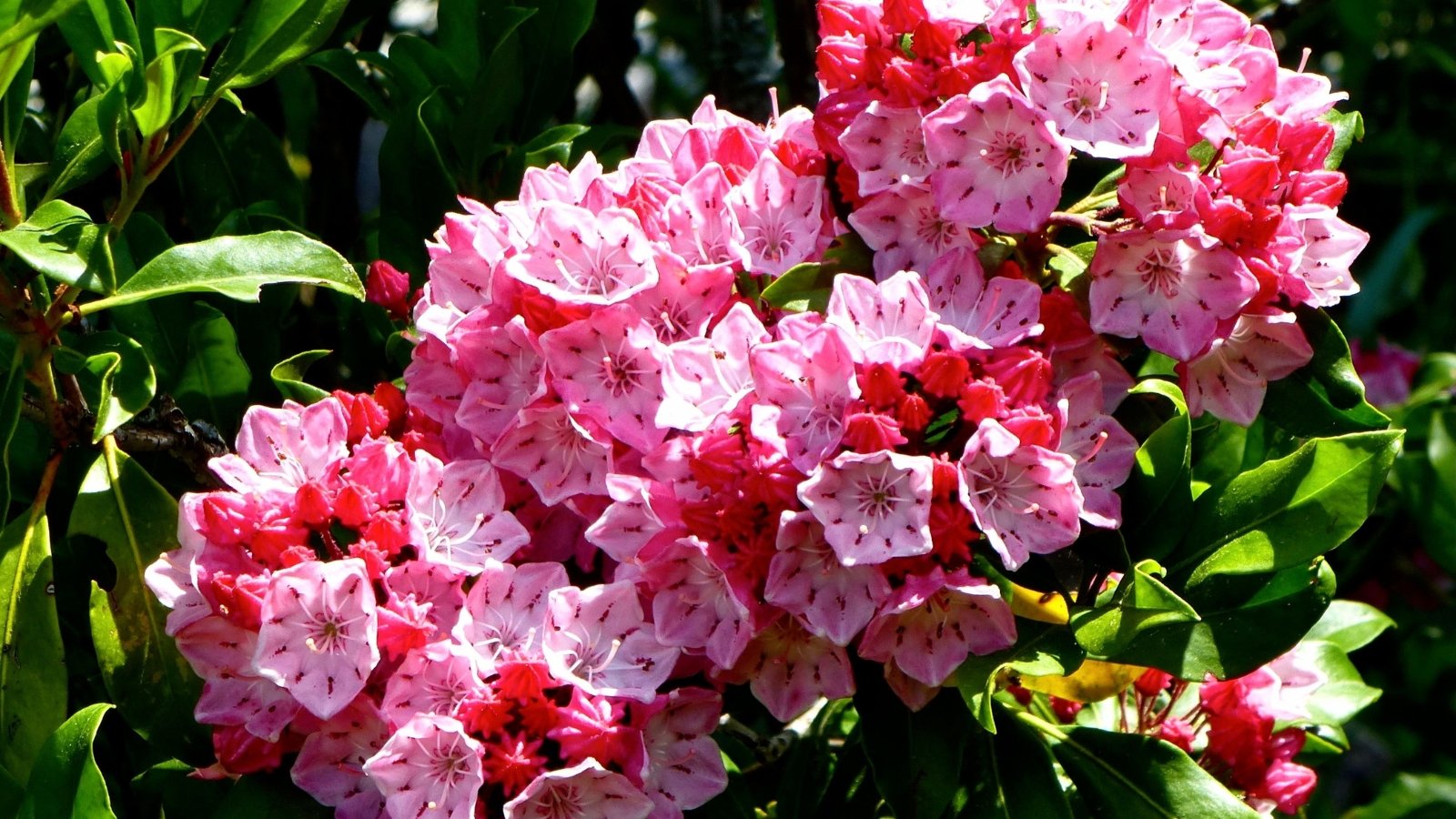
Hard to grow but spectacularly showy, mountain laurel shrubs surprise gardeners with their patterned clusters of blooms. Each cluster consists of pink and white star-shaped flowers. Related to rhododendrons, this shrub grows green leaves on stems in the same manner.
Mountain laurels grow naturally in eastern North America and appreciate moist, rich soil. They like dappled shade and cool conditions. Give them Partial shade conditions in hot areas of the U.S. and keep the soil cool during summer droughts. Incredibly cold-hardy, they are safe to at least 0°F (-18°C).
Mountain laurels mature slowly, and they don’t transplant well because of their sensitive roots. Surface sow seed in pots under grow lights in the winter. By spring, they’ll grow tall enough for transplanting into bigger pots for further growth outside.
Final Thoughts
Say yes to native plants this growing season. No matter the garden zone, there are shrubs, perennials, and annuals that paint landscapes with their beautiful flowers. Experiment with a few and you’re sure to find a few new favorites!
When you grow native plants from seed, you add new plant members to the environment and help them proliferate throughout the country. You contribute to those species’ populations, and aid in their continued existence. Try growing some seeds today and let the plants do the rest!



